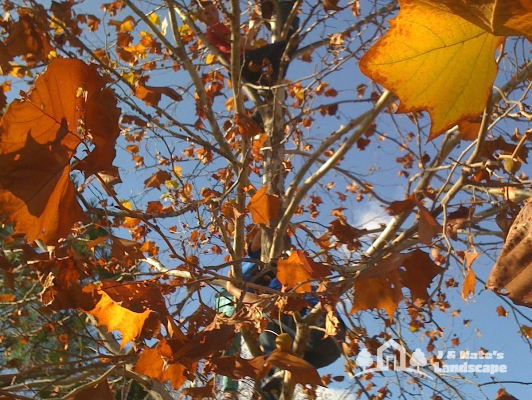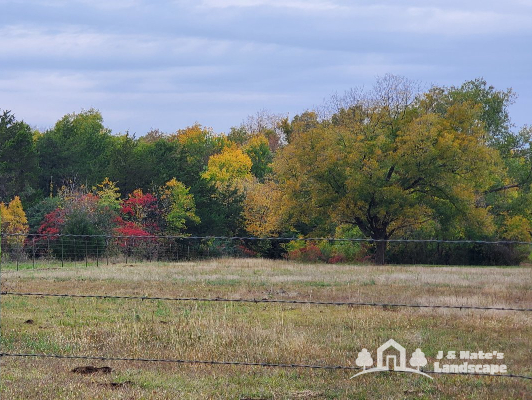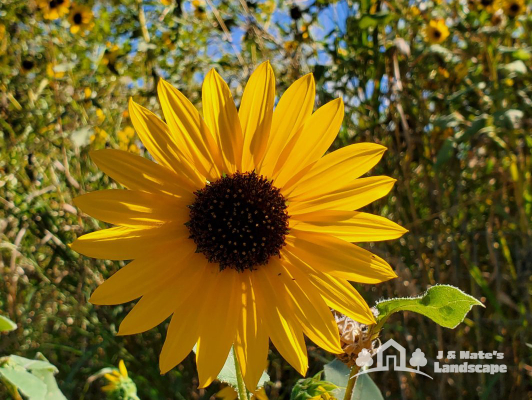If you're a proud homeowner in Oklahoma, you know that maintaining a healthy and beautiful lawn requires some special attention, especially as the vibrant colors of summer transition into the cozy embrace of fall. Welcome to the Complete Guide to Oklahoma Fall Lawn Care, where we'll provide you with expert insights, actionable tips, and step-by-step instructions to ensure your lawn stays lush and inviting throughout the autumn months.
As the leaves start to change and the temperatures begin to drop, it's important to adapt your lawn care routine to the changing conditions. Here, we'll cover everything you need to know to keep your lawn in top shape during the fall season.
The Fall Lawn Care Basics: A Quick Overview
Before we dive into the specifics, let's explore the fundamental steps that will set the stage for a successful fall lawn care regimen.
Fall is the perfect time to give your lawn some extra TLC. As the focus shifts from growth to root development, you'll want to prioritize tasks that strengthen the grass and prepare it for the winter ahead. Here's a snapshot of the key components of fall lawn care:
- Mowing for Success: Adjust your mowing height gradually to encourage deeper root growth. Aim to trim no more than one-third of the grass height in a single mow.
- Aeration Matters: Core aeration allows nutrients, water, and air to reach the grassroots, promoting healthy growth.
- Say Yes to Overseeding: Overseeding with cool-season grasses like fescue helps fill in bare spots and enhances overall lawn density.
- Fertilize Wisely: Choose a fall-specific fertilizer blend with a higher potassium content to boost disease resistance and cold tolerance.
- Weed Control: Tackle weeds in the fall while they're actively growing, and consider using pre-emergent herbicides to prevent spring weeds.
- Hydration Is Key: Keep watering your lawn as needed, adjusting to the changing weather patterns. Morning watering minimizes evaporation.
Mowing Techniques: The Art of Cutting
Mowing your lawn might seem straightforward, but there are nuances to consider, especially in the fall. When it comes to mowing during the autumn season:
- Raise the Blades: Adjust your mower's cutting height to leave your grass slightly taller. Taller grass shades the soil, reducing moisture loss and weed growth.
- Regular Trims: Continue mowing as needed until the grass growth slows down. Don't let your lawn become overly tall before the first frost hits.
- Mulch It Up: Consider mulching the leaves instead of raking them. This can provide extra nutrients as the leaves decompose.
Aeration: Giving Your Lawn a Breather
Aeration is like a breath of fresh air for your lawn, and fall is the perfect time to do it:
- Why Aerate?: Over time, soil compaction restricts root growth. Aeration creates pockets in the soil that allow roots to expand and access nutrients.
- How to Aerate: Rent a core aerator or hire a professional service. Run the aerator over your lawn, and let the extracted plugs decompose on the surface.
Overseeding: Thicken Your Lawn's Carpet
Overseeding is an essential step to ensure a thick and lush lawn come spring:
- The Power of Overseeding: It helps fill in thin areas, improves disease resistance, and enhances the overall health of your lawn.
- Seed Selection: Opt for cool-season grass varieties that thrive in Oklahoma's climate, such as tall fescue or Kentucky bluegrass.
- Preparation is Key: Mow your existing lawn slightly shorter than usual and rake away debris to create a clean canvas for the new seeds.
Fertilizing: Feeding Your Lawn's Roots
Fertilizing in the fall sets the stage for healthy growth in the following seasons:
- The Fall Blend: Look for a fertilizer with a high potassium content, as it strengthens the grass against cold weather and diseases.
- Application Tips: Follow the manufacturer's instructions for application rates. A spreader can help ensure even coverage.
- Timing Matters: Apply the fertilizer in early fall, usually around late September to early October.
Weed Control: Winning the Battle
Don't let pesky weeds take over your lawn. Fall is the perfect time to regain control:
- Target Weeds Directly: Use a broad-spectrum herbicide to target existing weeds. Spot treat to minimize the impact on your grass.
- Pre-Emergent Application: Apply pre-emergent herbicides to prevent the germination of winter weeds.
Watering Wisely: Quenching Your Lawn's Thirst
Proper hydration is essential for your lawn's health, even in the fall:
- Adjust to the Season: As temperatures drop, adjust your watering schedule to prevent over-watering. Morning is the best time to water.
- Watch the Weather: If there's ample rainfall, dial back your irrigation. Consistency is key.
FAQs
Can I mow my lawn really short before winter?
It's not advisable. Mowing too short can stress your grass and leave it vulnerable to cold temperatures.
Should I rake up leaves in the fall?
While raking leaves is essential, consider mulching them to provide nutrients to the soil as they break down.
Is fall a good time to dethatch my lawn?
Fall is generally not the best time for dethatching, as it can stress the grass during its dormant period.
Can I use spring fertilizer in the fall?
It's better to use a fall-specific fertilizer blend, as it contains the nutrients your lawn needs to prepare for winter.
How often should I water my lawn in the fall?
Aim for about 1 inch of water per week, including rainfall. Adjust based on weather conditions.
Can I apply weed and feed products in the fall?
It's best to avoid weed and feed products in the fall. Focus on weed control and use a specialized fertilizer.
Call for a Fall Lawn Care Quote
We'll diagnose your lawn and help you setup a treatment plan.



